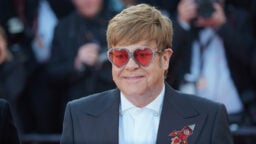Country music legend Randy Travis, who has been battling limited speech for over a decade following a debilitating stroke, surprised fans with the release of his first new song in over a decade.
The song called Where That Came From, was released on the occasion of his 65th birthday in collaboration with Warner Music Nashville. Warner saw an opportunity to utilize AI “for good” with its effort to restore Travis’ voice.
Cris Lacy, Co-Chair & Co-President of Warner Music Nashville, spearheaded the project. She envisioned AI not as a replacement for human creativity, but as a tool to support artists like Travis, according to a press release on Monday (May 6).
“AI for good would be giving Randy Travis his voice back,” Lacy said.
The team, which included Travis’s longtime producer Kyle Lehning, identified Where That Came From, an unreleased song by James Dupré, and written by Scotty Emerick and John Scott Sherrill, as a starting point. They then employed a specialized AI program to analyze Travis’s existing vocals.
“Working with Kyle Lehning and Warner Music Nashville again has been so special and nostalgic, and I’m so excited to share my new song ‘Where That Came From’ with you today.”
Randy Travis
As detailed in an interview with the Associated Press, the team produced two models: one with 12 vocal stems or song samples, and another with 42 stems gathered from Travis’ career from 1985 to 2013.
After inputting the demo vocal sung by Dupré into the AI models, Lehning told the AP that “it took about five minutes to analyze.”
Lehning and engineer Casey Wood, who also worked closely with Travis, cherrypicked from the two models and made changes to elements like vibrato speed, or slowing and relaxing phrases, the AP reports.
In a statement, Travis said, “Eleven years ago I never thought I would be able to have a hand in music production of any kind. But by God’s grace and the support of family, friends, fellow artists, and fans, I’m able to create the music I so dearly love.
“Working with Kyle Lehning and Warner Music Nashville again has been so special and nostalgic, and I’m so excited to share my new song Where That Came From with you today. Many thanks to my wonderful team and the best fans in the world for putting me back in the saddle again! I’ve enjoyed every moment of it.”
“AI may have been a tool that helped us along, but it was a group of dedicated and passionate humans, including Randy himself, that brought this beautiful song to life.”
Cris Lacy, Warner Music Nashville
Lacy added: “The motivation behind a musical recording is specific to each individual artist. The genesis of this particular track came from a visceral desire to restore what was taken away from someone we know and love – Randy Travis. It was inspired by his courage to continue as a vital contributor to the music community.
“In working with him to make new recordings, the byproduct is a gift that goes straight to our hearts. AI may have been a tool that helped us along, but it was a group of dedicated and passionate humans, including Randy himself, that brought this beautiful song to life.”
Travis is an inductee into the Country Music Hall of Fame class of 2016, with lifetime sales exceeding 25 million. He has been awarded with seven Grammy Awards, 11 Academy of Country Music statuettes, 10 American Music Awards, two People’s Choice awards, seven Music City News awards, eight Dove Awards from the Gospel Music Association and five Country Music Association honors.
The Travis project echoes other AI efforts in the music industry, notably the release last November of the last Beatles song, Now and Then, which used AI to salvage a song that band member John Lennon wrote and recorded onto a boombox in his New York apartment in 1978, two years before he was assassinated.
“There it was, John’s voice, crystal clear. It’s quite emotional,” Paul McCartney said in a statement. “And we all play on it, it’s a genuine Beatles recording. In 2023 to still be working on Beatles music, and about to release a new song the public haven’t heard, I think it’s an exciting thing.”
Ringo Starr added: “It was the closest we’ll ever come to having [John Lennon] back in the room, so it was very emotional for all of us. It was like John was there, you know. It’s far out.”
Warner Music Group CEO Robert Kyncl, in a recent column published in The Hill, highlighted the benefits of AI in “posthumous biopics featuring perfect replicas of late stars, or singers who have lost their voice to illness miraculously recording again.”
However, Kyncl also warned of the possible downside for artists such as “vast scraping and copying of creative works, and the rise of deep fakes where artists’ voices, faces and identities are appropriated without their consent.”
In a recent appearance at a congressional hearing on a potential bill to crack down on AI-generated deepfakes, Kyncl said: “Today, music companies are helping artists, rightsholders and tech companies figure out this new world, which is both exciting and daunting. It’s our job to not only help amplify artists’ creativity, but to protect their rights, their livelihoods, and their identities.”Music Business Worldwide




